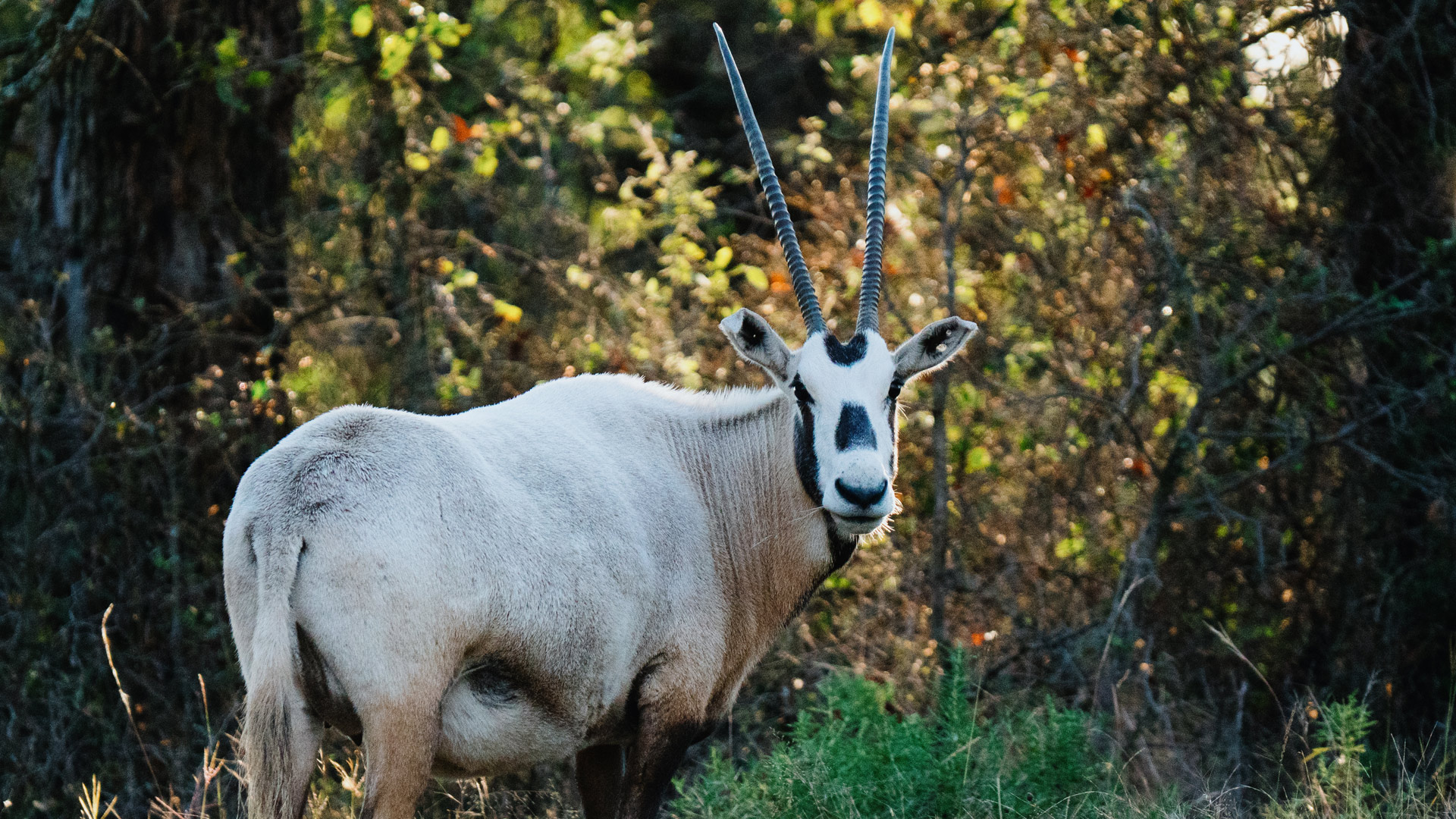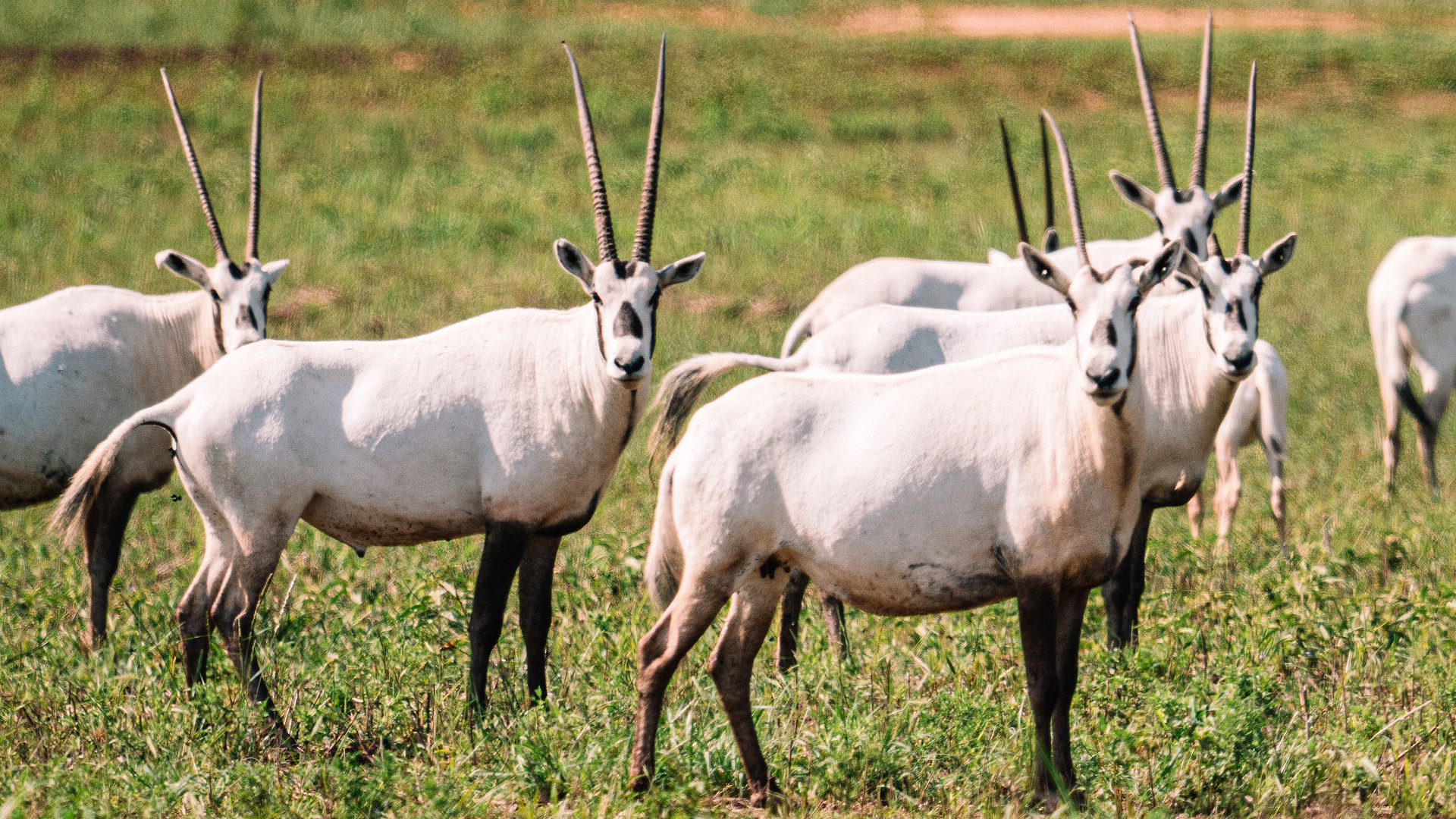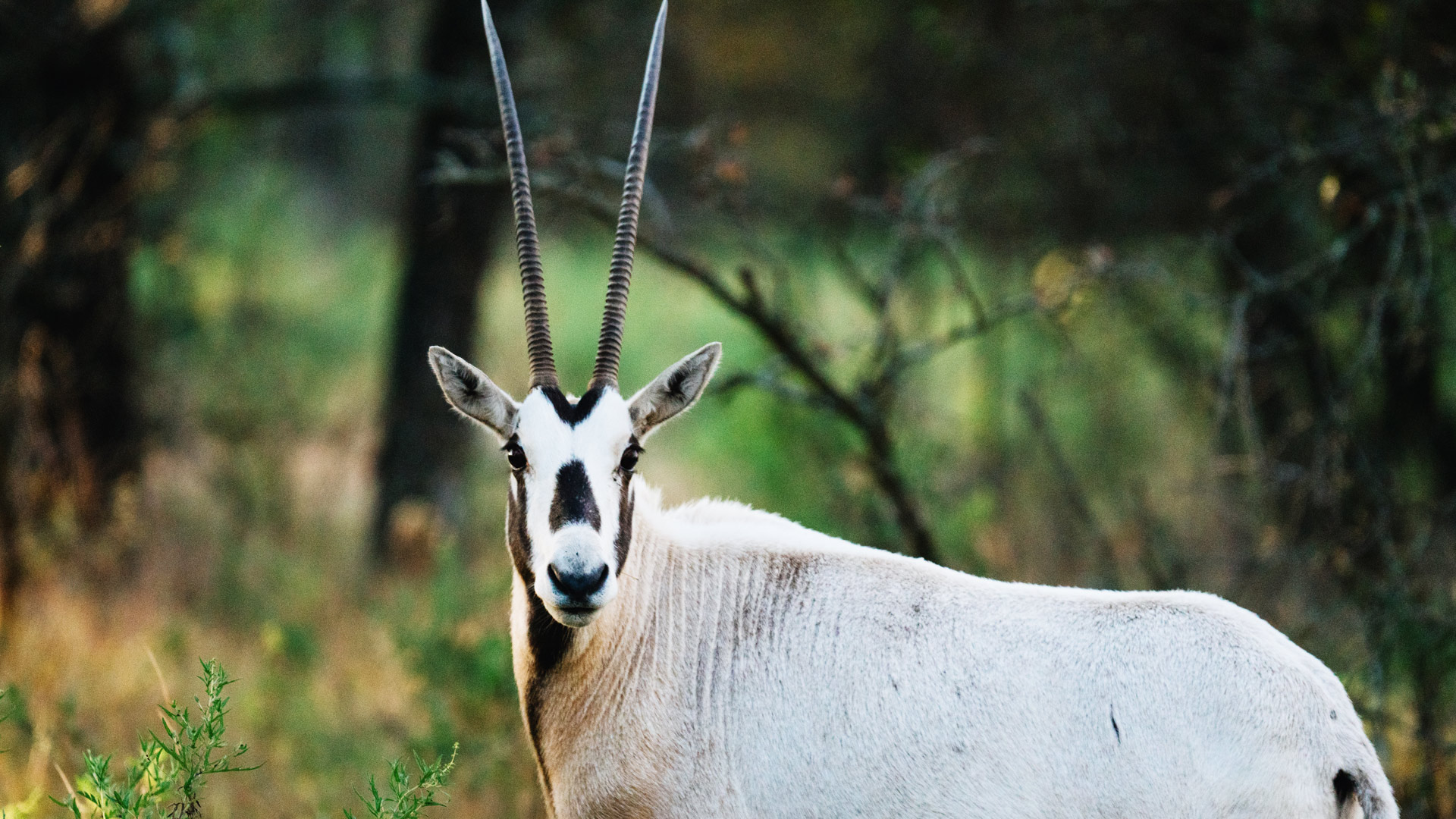
(Oryx leucoryx)
Physical Description:
An Arabian Oryx stands between 2.6ft to 4.1ft tall at the shoulder and typically weighs between 220 to 460 lbs. Its coat is an almost luminous white, the undersides and legs are brown, and black stripes occur where the head meets the neck, on the forehead, on the nose, and going from the horn down across the eye to the mouth. Both sexes have long, straight or slightly curved, ringed horns which are 2ft to 4.9ft long.
Reproduction:
Females give birth to a single calf per breeding season. They will give birth to their first calf when they are 2.5 to 3.5 years old.
Gestation period last 240 days (8 months).
Native Range Land:
Historically, the Arabian Oryx probably ranged throughout most of the Middle East. In the early 1800s, they could still be found in the Sinai, Palestine, the Transjordan, much of Iraq, and most of the Arabian Peninsula. During the 19th and early 20th centuries, their range was pushed back towards Saudi Arabia, and by 1914, only a few survived outside that country. A few were reported in Jordan into the 1930s, but by the mid-1930s, the only remaining populations were in the Nafud Desert in northwestern Saudi Arabia and the Rub' al Khali in the south.
In the 1930s, Arabian princes and oil company clerks started hunting Arabian oryxes with automobiles and rifles. Hunts grew in size, and some were reported to employ as many as 300 vehicles. By the middle of the 20th century, the northern population was effectively extinct. The last Arabian oryx in the wild before reintroduction was reported in 1972.
Arabian Oryxes prefer to range in gravel deserts or hard sand, where their speed and endurance will protect them from most predators and hunters on foot. In the sand deserts in Saudi Arabia, they used to be found in the hard sand areas of the flats between the softer dunes and ridges.
They have been reintroduced to Oman, Saudi Arabia, Israel, the United Arab Emirates, Syria, and Jordan. A small population was introduced on Hawar Island, Bahrain, and large semi-managed populations at several sites in Qatar and the UAE. The total reintroduced population is now estimated to be around 1,000. This puts the Arabian oryx well over the threshold of 250 mature individuals needed to qualify for endangered status. However, the majority of the population is concentrated in Saudi Arabia.





